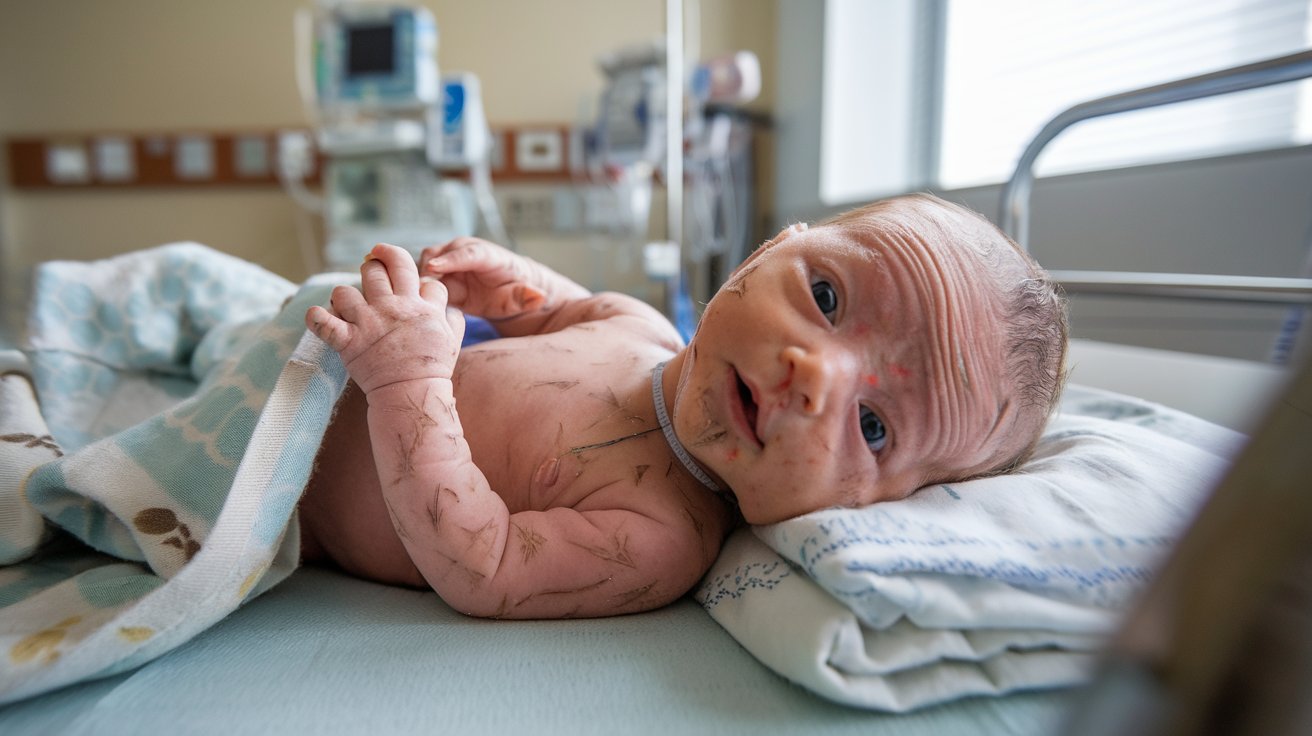
What is Ichthyosis Prematurity Syndrome (IPS)? Imagine being born with skin so thick and clay-like that it resembles armor. This is the reality for infants with Ichthyosis Prematurity Syndrome (IPS), a rare genetic disorder affecting fewer than 100 people worldwide. Caused by mutations in the SLC27A4 gene, IPS leads to premature births, respiratory distress, and lifelong skin issues. Babies with IPS often face immediate challenges like breathing difficulties due to debris-filled amniotic fluid. Over time, their skin may remain dry and scaly, requiring constant care. Understanding IPS is crucial for managing its complex symptoms and improving the quality of life for those affected.
What is Ichthyosis Prematurity Syndrome?
Ichthyosis Prematurity Syndrome (IPS) is a rare genetic disorder affecting newborns' skin. It presents unique challenges and symptoms that require specialized care.
-
Definition and Prevalence: IPS is a rare genetic disorder, affecting fewer than 100 individuals worldwide. Its rarity makes it a challenging condition to diagnose and treat.
-
Inheritance Pattern: IPS follows an autosomal recessive inheritance pattern. Both parents must carry a copy of the defective gene for their child to be affected.
-
Causes: Mutations in the SLC27A4 gene cause IPS. This gene is responsible for producing the fatty acid transport protein 4 (FATP4), essential for skin barrier function during development.
Symptoms and Clinical Features
Understanding the symptoms and clinical features of IPS can help in early diagnosis and management.
-
Clinical Features at Birth: Infants with IPS are born prematurely with thick, clay-like skin covered in a vernix. This skin condition is often red and slightly scaly.
-
Polyhydramnios: One hallmark of IPS is polyhydramnios, an excessive amount of amniotic fluid. This condition can trigger premature labor.
-
Respiratory Distress: The excessive amniotic fluid contains keratinocyte debris, which can cause temporary respiratory failure in newborns due to aspiration into the lungs.
-
Neonatal Asphyxia: Debris from the amniotic fluid can block the bronchial tree, leading to neonatal asphyxia, where the baby struggles to get enough oxygen.
Long-term Effects and Management
IPS doesn't just affect newborns; it has long-term implications that require ongoing care.
-
Skin Changes Over Time: While skin changes are most pronounced at birth, they can lessen rapidly. However, mild ichthyosis and follicular hyperkeratosis may persist into later childhood and adulthood.
-
Atopic Conditions: Individuals with IPS have a higher incidence of atopic conditions like asthma, eczema, and hay fever due to chronic inflammation and skin barrier dysfunction.
-
Diagnostic Tests: Diagnosing IPS involves clinical examination and genetic testing to confirm the mutation in the SLC27A4 gene.
Prenatal and Postnatal Care
Proper care before and after birth is crucial for managing IPS effectively.
-
Prenatal Diagnosis: Prenatal observation of fetal membrane separation or dense amniotic fluid may indicate IPS. Expert obstetric care and ultrasound monitoring are essential.
-
Management and Treatment: Affected babies should be delivered with ventilatory support available. Intensive care is often required post-birth to manage respiratory distress and other complications.
-
Long-term Skin Issues: Individuals with IPS may continue to have dry skin and follicular ichthyosis into adulthood, necessitating chronic skin care and monitoring for infections.
Social and Genetic Considerations
IPS impacts not just health but also social interactions and family planning.
-
Social and Cosmetic Implications: Severe skin manifestations can lead to significant social and cosmetic challenges, affecting social integration and self-esteem.
-
Genetic Screening: Molecular screening is crucial for accurate diagnosis. Genetic testing can identify mutations and guide treatment.
-
Healthcare Challenges: Managing IPS requires a multi-disciplinary approach involving dermatologists, pediatricians, and geneticists. Improper management can worsen the condition and affect quality of life.
Regional Prevalence and Related Conditions
Some regions report higher cases, and IPS can be compared to other similar conditions.
-
Regional Clusters: Clusters of IPS cases have been reported in Ireland and Scandinavia, suggesting a higher prevalence in these regions.
-
Short Stature and Vitamin D Deficiency: Some individuals with IPS may experience short stature. Vitamin D deficiency has been identified as a treatable cause of short stature in PIBIDS syndrome, a variant of trichothiodystrophy.
-
Harlequin Ichthyosis Comparison: IPS is distinct from harlequin ichthyosis, another rare genetic skin disorder characterized by thick, plate-like scales that crack and split, causing significant respiratory and feeding difficulties.
-
Future Research Directions: Further research is needed to understand IPS pathogenesis and develop more effective treatments. Molecular genetics and advanced diagnostic techniques hold promise for improving management and outcomes.
Understanding Ichthyosis Prematurity Syndrome
Ichthyosis Prematurity Syndrome (IPS) is a rare genetic disorder that affects newborns, causing thick, clay-like skin and various complications. This condition, inherited in an autosomal recessive pattern, stems from mutations in the SLC27A4 gene. Infants with IPS often face premature birth, respiratory distress, and long-term skin issues. Polyhydramnios, excessive amniotic fluid, is a hallmark feature, leading to respiratory challenges at birth. While skin changes lessen over time, individuals may still experience mild ichthyosis and atopic conditions like asthma and eczema. Accurate diagnosis involves clinical examination and genetic testing. Managing IPS requires a multi-disciplinary approach, including dermatologists, pediatricians, and geneticists. Despite its rarity, understanding IPS is crucial for providing appropriate care and support. Ongoing research aims to improve treatment and outcomes for those affected by this challenging condition.
Was this page helpful?
Our commitment to delivering trustworthy and engaging content is at the heart of what we do. Each fact on our site is contributed by real users like you, bringing a wealth of diverse insights and information. To ensure the highest standards of accuracy and reliability, our dedicated editors meticulously review each submission. This process guarantees that the facts we share are not only fascinating but also credible. Trust in our commitment to quality and authenticity as you explore and learn with us.


